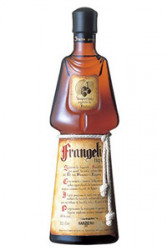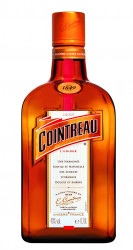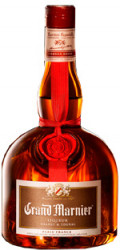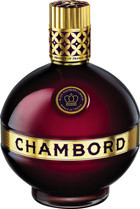No longer relegated to the back of the drinks cabinet, liqueurs are making a comeback, says Delaney Mes
The liquor cabinet hasn’t had quite the pride of place in the home it once enjoyed. In the days evoked in Mad Men, the cabinet itself was a thing of beauty, made of wood and chrome with bottles resting on elegant trays.
The spirits atop it were enjoyed regularly too; crafting a drink was a form of entertainment in itself, particularly with the correct glassware and a fully stocked ingredients shelf.
Over the years, the increase in other kinds of drinks such as wine, beer, ciders and spritzers, as well as a change in the way we socialise, has meant some of the liqueurs that may once have been familiar features on the drinks menu have been pushed to the back of the shelf.
But there’s a renaissance of sorts happening and your dusty bottles of liqueur are required for duty.
To begin, a bit of background: a liqueur, by definition, is a distilled spirit flavoured with herbs, roots, nuts, fruit, spice, cream or flowers, and then generally sweetened with sugar. They’ve evolved from the herbal medicines of yesteryear, and as a result some liqueurs still on the market today have been around longer than you and I. But there’s also a steady stream of new and interesting liqueurs, which can be enjoyed in a number of ways.
Whether you’re re-stocking your liquor cabinet, or simply wresting your collection from the depths of your pantry, some new glassware can help your cause. And in fact, the cheaper vintage glasses available at op shops make for amazing bargains. Look out also for a vintage silver tray, an ice tray that makes large cubes, a stirrer, a strainer, and a shaker – all basic tools of this trade.
A hint of hazelnut
I first encountered one of my favourite liqueurs a few years ago when my friend poured me a shot, alongside a wedge of lime and a shake of sugar. Frangelico, it turns out, with its sweet and smooth hazelnut flavour, makes an extremely palatable alternative to the tequila-lemon-salt throwback.
Frangelico hails from Italy, and you’ll probably recognise its signature tall bottle, which echoes the shape of a monk’s robes. The hazelnut is blended with herbs, and it is one of those liqueurs that lends itself brilliantly to cocktails. The hazelnut martini is nothing without it, for example, but it could be argued it’s actually even better in desserts. Affogato (a shot of coffee served over a scoop of vanilla bean ice cream) is made infinitely better with an additional shot of Frangelico – the perfect end to a meal.
Other liqueurs work well at dessert time too. A swizzle of Grand Marnier through fruit salad gives a rich orange base, while peaches soaked in Cointreau make an extra-luscious Peach Melba, that famed English dish of peaches, ice cream and berry coulis.
Fabulously French
Chambord has had a moment in the sun again lately. Hailing from France and possibly dating back to the days of Louis XV, this aromatic beauty is not quite ready to be banished to the ’80s, where some might say it belongs.
It’s a sweet black raspberry liqueur, made from black and red raspberries, vanilla and Cognac, and surprisingly versatile. Adding a shot to a glass of bubbles will take your Mimosa to delicious new heights. Or make a mixture of Chambord, berries, flower petals and water, and freeze into large ice cubes for a stunning addition to a tall glass of soda or old-fashioned lemonade. Chambord is a great addition to a berry coulis as well.
Add a few splashes to some frozen berries on a stovetop, along with some sugar, and cook until thickened and reduced. Pass it through a sieve and you’re left with a delicious addition to whipped cream, or the perfect drizzle for any plain cake. When it comes to baking, most liqueurs are ideal for making an adults-only cake glaze, simply by mixing with icing sugar and spreading on top.
The Italian Job
The Italian Galliano is another iconic liqueur, and comes bright yellow in a tall, slim bottle. Its primary flavour is vanilla, but it’s also aromatic with star anise, juniper, musk yarrow, lavender, peppermint and cinnamon. Galliano is the key ingredient in the 1950s Harvey Wallbanger, where it’s mixed with orange juice and vodka. It’s particularly good in a special coffee, at the end of a winter dinner party, or simply sip neat. It also works well in baking, thanks to all its aromatic complexity.
So, whether you’re looking to expand your collection, or already have some delicious treasures lurking at home, winter is the perfect time to put that liqueur collection to good use. And I’ll drink to that.






